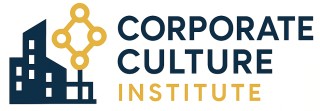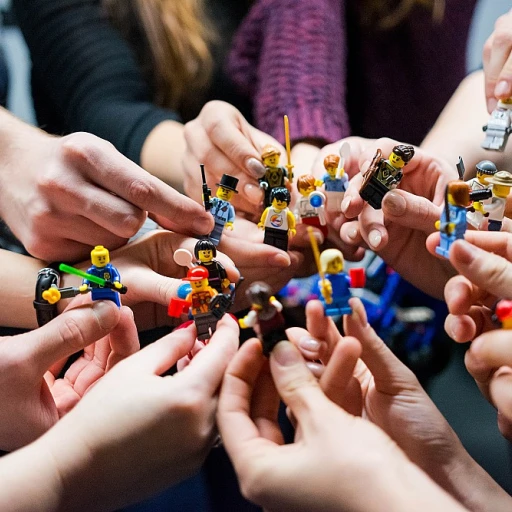Understanding the Importance of Peer Recognition
The Essential Role of Recognition in the Workplace
Peer recognition has rapidly become a cornerstone for many companies aiming to foster positive work environments. This practice is vital because it influences not only employee morale but also the overall performance and success of a team. When implemented effectively, recognition programs can energize employees, creating a culture where they feel genuinely valued for their hard work and dedication.
One of the primary benefits of peer recognition is that it boosts employee engagement. When a team member's efforts are recognized by their peers, they are more likely to continue exhibiting a positive attitude and commitment, leading to improved performance and productivity. This cultural shift towards appreciation helps embed company values into the daily employee experience.
Employees who feel appreciated and recognized are more inclined to invest their best efforts into their work. As they realize their contributions won't go unnoticed, a sense of satisfaction and motivation permeates the workplace. This, in turn, can lower turnover rates, as team members are more likely to remain loyal to a company that acknowledges their contributions and achievements.
Moving forward, simple yet effective peer recognition ideas and leveraging technology for these programs can further enhance their effectiveness. For more insights on crafting an impactful recognition initiative, explore our guide on how to create an effective employee recognition program, which offers detailed strategies and examples to help companies integrate recognition into their culture seamlessly.
Simple Yet Effective Peer Recognition Ideas
Nurturing a Culture of Recognition
In the pursuit of fostering an environment where employees feel valued and appreciated, integrating peer recognition into the daily workflow plays a pivotal role. The simplicity of peer acknowledgement can transform the workplace culture, creating a more positive and cohesive team dynamic.
Peer recognition is about acknowledging each other's contributions, efforts, and successes openly. This culture of appreciation not only boosts employee morale but also reinforces the company's values. When team members recognize each other's hard work, it enhances employee engagement and overall work dedication.
Here are some simple yet impactful ideas to incorporate peer recognition into your organizational practices:
- Shout Outs in Meetings: Acknowledge accomplishments during team meetings. This public appreciation highlights every member's role and encourages others to participate actively.
- Recognition Boards: Physical or digital boards where team members can post notes of appreciation. This visual representation can decorate the work environment with positivity and gratitude.
- Peer-to-Peer Awards: Establish awards that employees can nominate peers for, celebrating significant impacts on projects or team success.
- Positive Feedback Sessions: Regular, informal meetings where employees can share positive experiences and shout outs. They create a forum for open communication and encouragement.
- Social Media Kudos: Many organizations utilize internal social media platforms for recognition programs. Sharing recognition examples online amplifies appreciation and builds a broader community spirit.
Each approach helps in creating a work atmosphere where employees feel appreciated and motivated. By understanding that recognition efforts are integral to performance, companies can develop programs that enhance employees' experiences and contribute to a thriving workplace.
Discover more
creative ways to show employee appreciation to seamlessly integrate them into your company culture.
Leveraging Technology for Peer Recognition
Incorporating Tech Tools for Enhanced Peer Recognition
In the modern workplace, technology plays a pivotal role in promoting effective peer recognition. The use of tech tools not only simplifies the process but also adds an element of fun, making employees feel appreciated and enhancing company values. Having an underlying infrastructure for peer recognition can facilitate a smoother implementation and foster a stronger culture of appreciation.
An effective way to integrate technology is by utilizing recognition platforms that enable employees to give shout outs to team members for their contributions. These platforms can act as a central hub where appreciation can be shared openly, making everyone aware of the hard work and dedication channeled in the workplace. Recognition examples from these platforms can inspire others to participate actively, enhancing employee engagement across the board.
Another approach is to leverage your company’s existing communication tools, like messaging apps or internal social networks. Incorporating fun and engaging features such as badges or emojis can add a layer of personal touch to messages of appreciation. This enhances the work environment by encouraging a culture of continuous recognition and creating positive interactions among peers.
Moreover, implementing an employee recognition program that syncs with everyday digital tools can help streamline efforts to recognize employee performance and success. The ease of access and visibility can help in nurturing a positive attitude in the workplace culture, ensuring that employees feel valued.
By embracing technology, companies can create a seamless and engaging recognition experience that not only aligns with their recognition program but also supports work dedication and builds a positive work culture. For a deeper dive into effectively integrating technology into peer recognition strategies, consider exploring the insights provided in
the symphony of leadership in corporate culture.
Creating a Culture of Continuous Recognition
Building a Recognition-Rich Environment
Creating a culture of continuous recognition at work involves more than just establishing a recognition program. It's about integrating appreciation seamlessly into the daily routine of the organization. This requires a strategic shift towards fostering an environment where employees automatically appreciate and recognize each other's efforts and successes frequently.
Start by embedding company values into your recognition practices; this will ensure that every "shout out" reflects the core tenets of your business. Encourage team members to share positive examples of peers demonstrating these values during meetings. Highlighting these contributions not only reinforces desirable behaviors but also creates a sense of belonging and purpose among employees.
Encourage a mix of formal and informal recognition methods. While structured recognition programs are vital, informal opportunities—like public acknowledgments during team huddles or an impromptu coffee celebration for a team member's successful project—enrich the workplace culture and make employees feel valued.
Moreover, leaders should lead by example. When leadership actively participates in recognizing employee achievements, it sets a standard and instills a culture of appreciation throughout the organization. This is crucial in keeping the recognition momentum alive.
Finally, ensure the team understands that recognition isn't solely tied to performance metrics. Simple acts, such as maintaining a positive attitude or supporting a colleague, should be acknowledged, promoting a well-rounded recognition environment where all facets of work dedication are celebrated.
By integrating these practices into the company's daily workflow, you optimize employee engagement and help employees feel appreciated consistently, ultimately cultivating a vibrant and positive work environment.
Overcoming Challenges in Peer Recognition
Addressing Challenges and Boosting Participation in Peer-to-Peer Appreciation
Implementing peer recognition in the workplace is not without its challenges. One of the primary obstacles is ensuring that employees feel valued and appreciated by their peers, as not all team members may be accustomed to openly offering praise. To address this, it may be beneficial to set clear standards for what constitutes meaningful peer recognition examples. Encouraging sincere and specific feedback can help create a supportive culture of appreciation.
Moreover, some employees might feel hesitant about participating in recognition programs. It's important to recognize this hesitation and foster an environment where employee engagement is consistently encouraged, rather than expecting it to become second nature instantly. A positive work environment, where appreciation is part of the daily routine, can gradually lead to increased participation.
Another common challenge involves aligning recognition efforts with company values and objectives. Make sure that recognition reflects the core values of the company and that employees are aware of these ties. Training sessions or workshops can be practical tools for helping employees understand the importance of recognition in reinforcing workplace culture.
Shout outs and personalized notes are simple yet effective examples of peer recognition that can address some of these challenges. Consistent encouragement to offer these acknowledgments promotes a culture where employees feel appreciated, leading to enhanced morale and work dedication.
Lastly, communication is crucial. Creating a platform or space where recognition can be easily shared, like an internal newsletter or a company-wide meeting, ensures that contributions and efforts don't go unnoticed. Open dialogue fosters a positive attitude and inspires team members to recognize the hard work of their peers, ultimately contributing to overall company success.
Measuring the Impact of Peer Recognition
Assessing How Recognition Shapes Employee Engagement
Effectively measuring the impact of peer recognition in the workplace is crucial for understanding its influence on employee engagement and overall company success. By evaluating key performance indicators and gathering input from team members, a clearer picture of how peer recognition affects workplace culture can be developed.
One primary indicator of a successful peer recognition program is the level of employee engagement. Engaged employees are more likely to
feel appreciated and valued, which positively impacts their attitude and work dedication. Gathering feedback through surveys or regular meetings provides invaluable insights into how employees perceive the recognition program and whether they believe it aligns with company values.
Another method to gauge the impact of peer recognition is by observing changes in team dynamics and performance. Recognition examples might include increased collaboration or a noticeable shift in positive work environment and culture appreciation. A thriving program often results in team members working collaboratively towards shared goals, contributing to improved company performance.
Tracking recognition frequency and types of appreciation efforts can also highlight success. Many organizations find that when employees frequently participate in shout outs and share accolades, a strong culture of appreciation emerges. This not only encourages employees to continuously recognize each other but also fosters a culture of continuous recognition, reflecting the principles discussed in earlier sections.
While challenges exist in sustaining a consistent recognition culture, implementing tools to quantify successes and address areas of improvement can ensure programs remain effective and meaningful. Recognizing the hard work and contributions of employees holds an unequivocal ability to shape positive workplace culture and elevate employee engagement.














